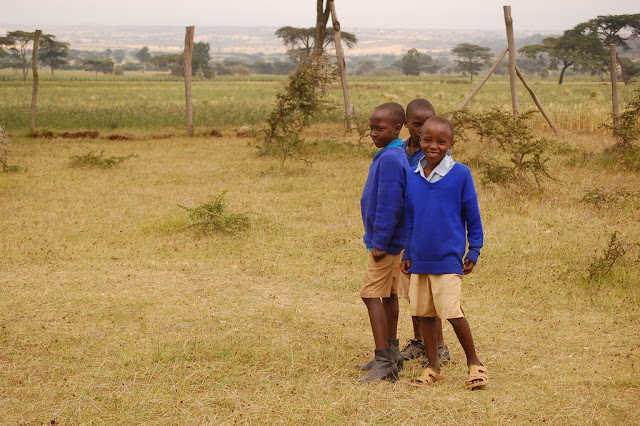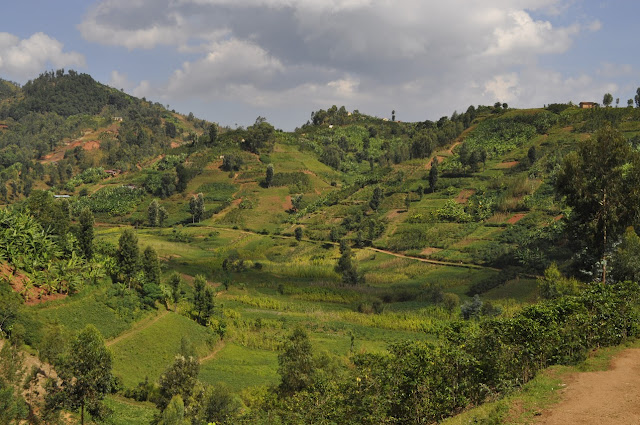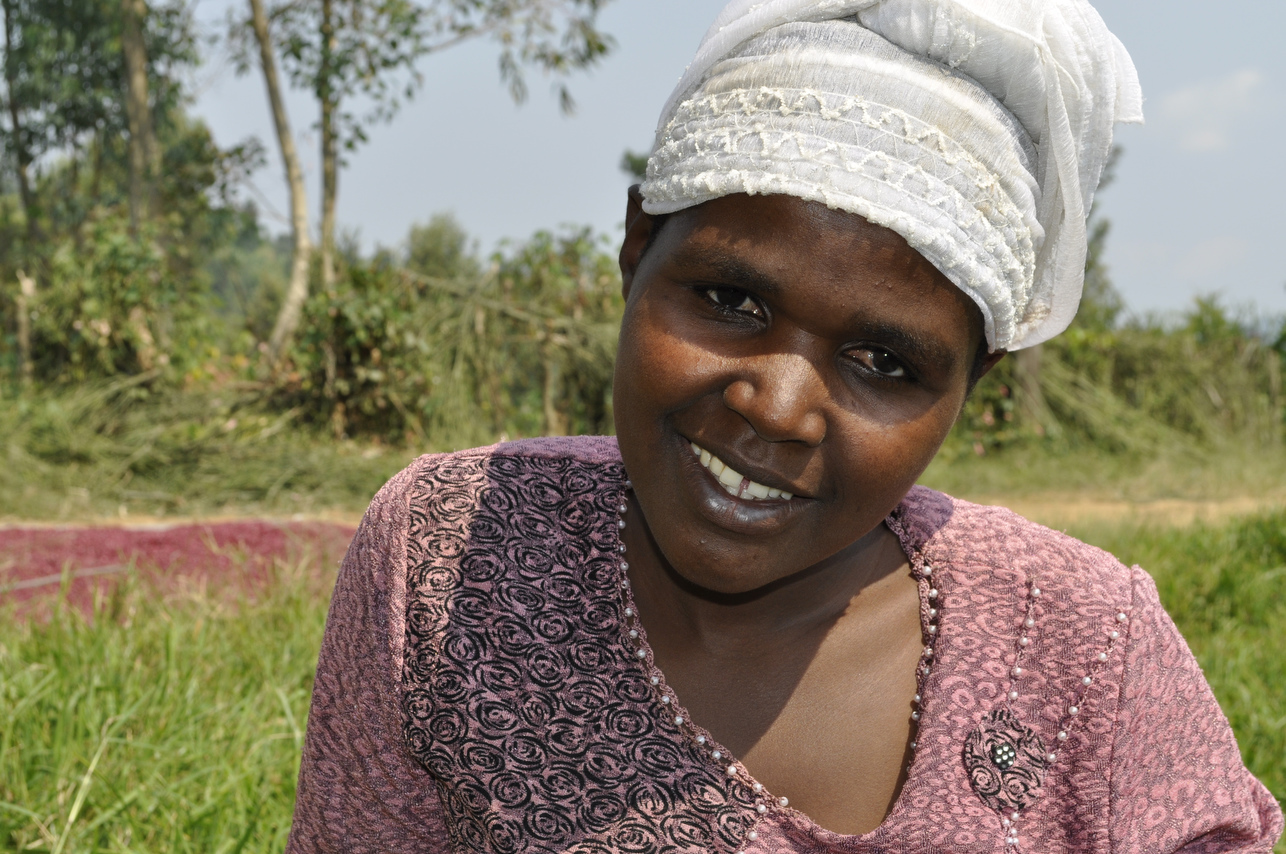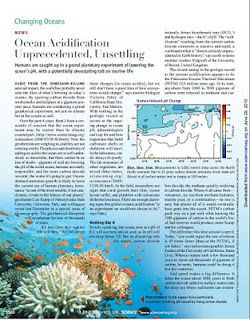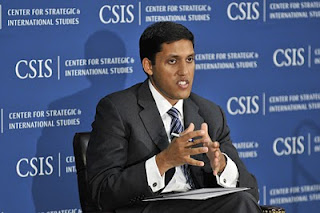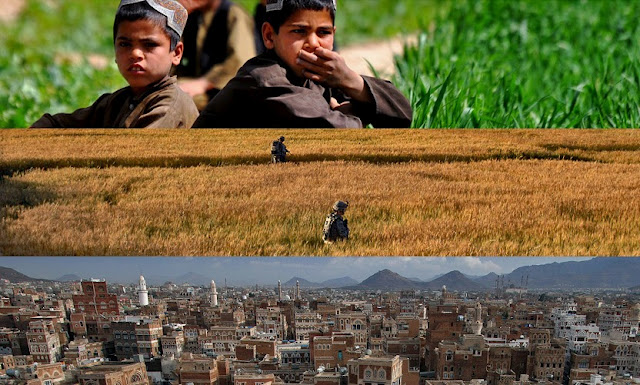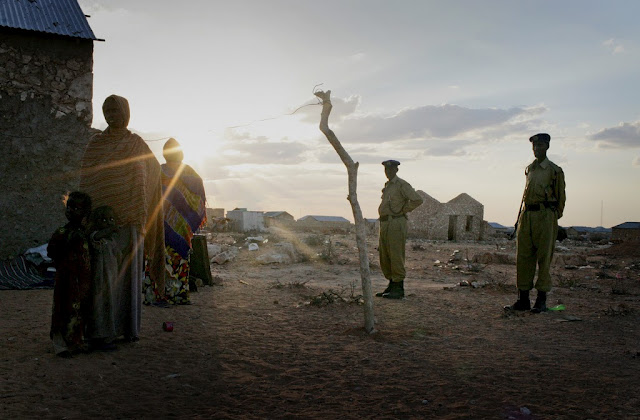Showing posts from category food security.
-
Land, Education, and Fertility in Rural Kenya
›August 10, 2010 // By Wilson Center StaffExcerpted from a summary on the Population Reference Bureau‘s website, by Karina Shreffler and F. Nii-Amoo Dodoo. The original version of this article appeared in Population and Environment 30, no. 3 (2009): 75-92.
Little is known about the role of land inheritance in the link between land availability and fertility. The recent transition from high to lower levels of fertility in some African countries presents an opportunity to clarify the underlying causes of this decline, since the individuals involved in the transitions are still alive.
Using data from focus group discussions with people whose childbearing occurred before and during the rapid and unexpected fertility decline in Nyeri District in rural Kenya, we examined the impact of diminishing land availability, farm size, and inheritance patterns on fertility decisionmaking and behavior. The results shed new light on the role of education, long considered the key determinant of fertility transition.
Our research suggests that rather than inheritance being an external factor affecting fertility behavior, parents in Nyeri District chose to educate their children after realizing they would not be able to bequeath a sufficient amount of land. Our work provides evidence of the importance of considering the influence of environmental factors on demographic processes, particularly in regions of resource dependence.
Continue reading on PRB.
For more on Kenya’s youth, see New Security Beat‘s interview with Wilson Center Scholar Margaret Wamuyu Muthee.
Photo Credit: “Olaimutiai Primary School (Maasai Land, Kenya),” courtesy of flickr user teachandlearn. -
Stephanie Hanson Reports on PHE in Agricultural Development and Rwanda’s ‘One Acre Fund’
›Driving from Kigali into rural Rwanda, the hills that flank either side of the paved road are covered with bananas, maize, coffee, and beans under cultivation. Most Rwandans are farmers, using any bit of available land to feed their families and generate income. In this country—the most densely populated in Africa—little arable land is left untended.
My organization, One Acre Fund, offers loans and education to smallholder farmers in Kenya and Rwanda. We work with 18,000 farmers in three districts in the southwestern and western part of Rwanda, where we are know as Tubura, which means “multiply” in Kinyarwanda.
Though One Acre Fund is not a traditional population, health, and environment (PHE) project, agricultural development work inherently is PHE work, particularly in Rwanda, which faces significant population and environment challenges.
Our farmers have small plots of land because Rwanda’s population density is so high—375 people per square kilometer, higher than Japan—leaving only .13 hectares of arable land per person. They struggle to grow enough food because it’s difficult to support a big family on a small piece of land, especially without access to high-quality seed and fertilizer.
When farmers don’t grow enough to ensure basic food security for their families, their children are malnourished, which makes them more susceptible to illness.
Finally, agriculture both depends on and affects the environment. Farmers need favorable growing conditions—good soil and adequate rainfall—for a good harvest. Sustainable agriculture practices, such as composting and preventing soil erosion, ensure the environment remains healthy to support future farming.One Acre Fund is acutely aware of the challenges that our farmers face due to high population density, food insecurity, and environmental degradation. We offer a service model that addresses all the needs of a smallholder farmer: financing, farm inputs, education, and market access.
When a farmer enrolls with One Acre Fund in Rwanda, she joins as part of a group of 6-15 farmers. She receives an in-kind loan of seed and fertilizer, which is guaranteed by her group members. One Acre Fund delivers this seed and fertilizer to a market point within two kilometers of where she lives. A field officer provides in-field training on composting, techniques to prevent soil erosion, land preparation, planting, fertilizer application, and weeding.
Over the course of the season, the field officer monitors the farmer’s fields. At the end of the season, he trains her on how to harvest and store her crop. One Acre Fund also offers a harvest buyback program that farmers can choose to participate in.
On average, One Acre Fund farmers double their farm income per acre in one growing season. Ninety-eight percent of our farmers repay their loans, which are due several weeks after harvest.
With their increased harvests, One Acre Fund farmers are able to feed their children, which reduces malnutrition. Anecdotally, we also know that One Acre Fund children experience less illness; this year, we are working to incorporate health indicators into our monitoring and evaluation work.
At a harvest buyback last month, I met many farmers who had benefited from One Acre Fund’s services. One woman, Tamar, had sold 400 kilograms (880 pounds) of beans at the previous season’s buyback, which earned her roughly 132,000 Rwandan francs ($235 USD). She told me that she was using the money to build a bigger home for the six of her ten children who lived at home.
However, Tamar really wanted to buy a cow, but she knew that she would not earn enough money this year to afford one. With so many children, she struggled to earn enough money to invest in something that might generate additional income for her and her family.
Another woman, Medeatrice, had also made $235 USD from the sale of her beans. With that income, she had opened a small shop with her husband in a nearby market. Unusually for Rwanda, where the average woman has 5.5 children, Medeatrice only had one, a three-year old boy named Prince. I asked her if she planned to have more children.
“I only want one more child,” she told me. “If I only have two children, it is easy to educate and to take care of them.”
The Rwandan government has invested in educating its population on family planning, but it will take time for birth rates to drop. For now, families with five, six, or nine children are not uncommon.
However, research shows that when women have increased access to economic opportunities, birth rates drop. One Acre Fund is focused on helping Rwanda’s families increase their harvests so that they not only have enough to eat, but they can start investing in their futures.
Guest Contributor Stephanie Hanson is the director of policy and outreach at One Acre Fund.
Photo Credit: Rwanda’s hills and Medeatrice, courtesy of Stephanie Hanson. -
Rough Waters Ahead: Our Changing Ocean
›From the ocean-themed June issue of Science comes “Sea-Level Rise and Its Impact on Coastal Zones“, by Robert J. Nicholls and Anny Cazenave. While sea-level rise will “almost certainly accelerate through the 21st century and beyond because of global warming,” Nicholls and Cazenave state that its magnitude remains uncertain. Small islands as well as the coasts of Africa, India, Southeast Asia, and China are identified as vulnerable areas because of their “dense populations, low elevations, appreciable rates of subsidence, and/or inadequate adaptive capacity.” Nicholls and Cazenave call for more research and analysis into adaptation, which “remains a major uncertainty.” “Ocean Acidification: Unprecedented, Unsettling,” by Richard A. Kerr, also appears in the June issue of Science. “Humans are caught up in a grand planetary experiment of lowering the ocean’s pH, with a potentially devastating toll on marine life,” begins Kerr, who aims to convince climate change-focused readers to also look at the world’s oceans. Rising pH levels, caused by ocean waters absorbing higher levels of carbon dioxide, are damaging shelled creatures, coral, and the organisms that rely on them for sustenance (which includes people, especially coastal populations dependent on the oceans for protein). An Australian survey recently found that calcification in the Great Barrier Reef had declined 14.2 percent since 1990 – a severe decline that has not been matched in the last 400 years. Kerr claims that “aside from the dinosaur-killing asteroid impact, the world has probably never seen the likes of what’s brewing in today’s oceans.”
“Ocean Acidification: Unprecedented, Unsettling,” by Richard A. Kerr, also appears in the June issue of Science. “Humans are caught up in a grand planetary experiment of lowering the ocean’s pH, with a potentially devastating toll on marine life,” begins Kerr, who aims to convince climate change-focused readers to also look at the world’s oceans. Rising pH levels, caused by ocean waters absorbing higher levels of carbon dioxide, are damaging shelled creatures, coral, and the organisms that rely on them for sustenance (which includes people, especially coastal populations dependent on the oceans for protein). An Australian survey recently found that calcification in the Great Barrier Reef had declined 14.2 percent since 1990 – a severe decline that has not been matched in the last 400 years. Kerr claims that “aside from the dinosaur-killing asteroid impact, the world has probably never seen the likes of what’s brewing in today’s oceans.” -
USAID Head Calls for Integrating Health Services in New Global Health Initiative
›July 2, 2010 // By Russell Sticklor This Tuesday, Dr. Rajiv Shah, administrator for U.S. Agency for International Development gave a major speech at the Center for Strategic & International Studies on USAID’s Global Health Initiative. With $63 billion earmarked for GHI over the next six years, there are high expectations for the program.
This Tuesday, Dr. Rajiv Shah, administrator for U.S. Agency for International Development gave a major speech at the Center for Strategic & International Studies on USAID’s Global Health Initiative. With $63 billion earmarked for GHI over the next six years, there are high expectations for the program.
Shah laid out some details of GHI’s main priorities, which include improving family planning services, enhancing nutrition initiatives, and building stronger and broader-based healthcare systems across the developing world, with special attention paid to the health needs of mothers and their young children. He offered a number of examples of the benefits of integrating family planning with other health services for women and children, including maternal health and nutrition.
Shah did not, however, mention integrating family planning with environmental programs, the benefits of which USAID-funded programs have amply demonstrated. He also did not delve into the emerging nexus of family planning, population growth, and climate change, a subject of much discussion at last month’s Women Deliver conference in Washington, D.C.
On the other hand, Shah did say that GHI’s emphasis on improving nutrition for the world’s poor will complement another major Obama administration outreach effort, the Feed the Future initiative—repeating a point he made at the recent launch of the food security effort.
Shah also highlighted the need for establishing benchmarks for measuring success that revolve around people, not diseases. He suggested one way of achieving this would be to ensure that clinics—particularly in rural areas—broaden their mandate to offer a variety of health-prevention services, rather than providing resources that treat primarily one type of illness.
For a full transcript of Shah’s speech, click here.
More analysis of Shah’s speech and USAID’s Global Health Initiative to come in the weeks ahead.
Photo Credit: “Statesman Forum: Dr. Rajiv Shah, USAID Administrator,” courtesy of flickr user CSIS: Center for Strategic & International Studies. -
Environmental Impacts of Madagascar’s Coup
Cutting the Head Off Conservation
›June 24, 2010 // By Tara Innes The coup in Madagascar in early 2009 not only politically destabilized the country, but also damaged its ability to protect its unique environment. A hotspot of biodiversity, Madagascar is the home of many species that exist nowhere else in the world.
The coup in Madagascar in early 2009 not only politically destabilized the country, but also damaged its ability to protect its unique environment. A hotspot of biodiversity, Madagascar is the home of many species that exist nowhere else in the world.
Deposed president Marc Ravalomanana, while criticized for prioritizing business interests, was a proponent of environmental conservation who leveraged the natural wealth of his country to promote sustainable development.
The coup caused donors to withdraw aid to the country; destroyed the tourism industry, and changed the priorities of the country’s leadership. The new government, led by President Andry Rajoelina, has failed to help—and has possibly harmed–Madagascar’s rich ecosystem.
Shortly after the coup, the United States suspended all non-humanitarian aid to Madagascar, including aid targeted at conservation efforts. The World Bank and the African Union also cut aid to the country.
Without international aid—which provides 90 percent of the funding for conservation, according to MongaBay—parks and endangered species cannot be preserved and protected. Conservation International documented reports of endangered lemurs being slaughtered and sold for bushmeat by poachers.
Funding for USAID’s integrated population-health-environment programs, which seek to improve health and reduce population pressures in remote communities near protected areas, was also suspended. Prior to the coup such programs were heralded largely as a success.
Instability has also made Madagascar an unattractive vacation destination. The tourism industry – much of it eco-tourism – has taken a massive economic hit, losing 12 percent of its value in 2009 and depriving some communities of a major source of support. The drop in tourist visits to the country’s national parks has “a big impact on the economics of the villages as 50 percent of the park entrance fees are used for village conservation and development projects,” the manager of the Ranomafana National Park told MongaBay’s Rhett Butler earlier this year.
While Ravalomanana tripled the area of protected lands in Madagascar during his tenure as president, he also made several unpopular decisions leading to rising food costs and unrest. Just prior to the coup, South Korea’s Daewoo Logistics Corporation attempted to negotiate a 99-year lease on 3.2 million hectares of farmland, contributing to anti-Ravalomanana sentiment fueled by Rajoelina, who later canceled the deal.
Some—including Ravalomanana–claim that the new government is being funded in part by illegal lumber exports. More recently, members of the transitional government banned trade in rainforest timber, but there are some concerns that this ban will not be enforceable given the continued political instability, reports MongaBay.
The damage already done “demonstrates that long-term conservation success depends on the overall political stability of a country and in turn on the steady improvement of the lives of its citizens,” wrote Rowan Moore Gerety in wildmadagascar.org last year.
“It’s difficult to work without a state,” said Guy Suzon Ramangason, director general of the organization that manages many of the national parks, recently told the New York Times.
Perhaps that situation will be rectified. In May Rajoelina announced that elections will be held in late 2010, in which he will not be running. Until then, it unlikely that conservation will receive adequate attention—from either Madagascar’s government or international donors.
Photo Credit: “Lemur behind the mesh” courtesy of flickr user Tambako the Jaguar -
Book Review: ‘Climate Conflict: How Global Warming Threatens Security and What to Do About It’ by Jeffrey Mazo
›June 8, 2010 // By Dan Asin The heated back-and-forth over climate conflict in the blogosphere and popular press prompts the questions: In the debate over the security threat of a warming planet, who is spewing the hot air? Does climate change precipitate conflict, and if so, who is most at risk?
The heated back-and-forth over climate conflict in the blogosphere and popular press prompts the questions: In the debate over the security threat of a warming planet, who is spewing the hot air? Does climate change precipitate conflict, and if so, who is most at risk?
In Climate Conflict: How Global Warming Threatens Security and What to Do About It, Jeffrey Mazo unabashedly argues that weak–but not yet failed–states are at the greatest risk of climate-driven conflict. Packed into only 166 pages, the book takes readers on a crash course through climate science; 10,000 years of human-environmental history; case studies of the pre-modern South Pacific and modern-day Colombia, Indonesia, and Darfur; and analysis of geopolitical instability and stressors. This tour d’horizon all builds up to one point: Global warming and climate change threaten our security.
Key to Mazo’s work is the important but oft-overlooked insight that it is not the magnitude of climate change, but the difference between the rate of climate change and a society’s ability to adapt that threatens stability. He also confronts the all-too-common assertion that accepting climate change as a threat multiplier absolves individuals of culpability, and is explicit that intrastate–rather than interstate–conflict is the norm.
The Weakest Are Not the Greatest Threat
Mazo weaves threads of non-traditional and human security throughout the text, asserting that “there is no real contradiction between humanitarian and security goals” (pg. 132). However, his primary concern is the security of the nation-state and the international system. He argues that the next two to four decades are the most relevant time for strategic planning.
Within this context, Mazo claims global warming’s central security challenge will be the threat it poses to stability in states that are either unable or unwilling to adapt. Few will be surprised, therefore, when he says weak, fragile, and failing states appear the most vulnerable.
Mazo suggests that already fragile or failed states lying in climate-sensitive areas–namely a handful of states in sub-Saharan Africa, plus Haiti, Iraq, and Afghanistan–are the most likely to experience increased volatility as a result of warming-induced climate change. Yet he departs from received wisdom when he suggests that global warming’s greatest threat to international security is actually how it will impact more resilient states like Burkina Faso, Colombia, and Indonesia.
Precisely because they are less at risk, the onset of instability in these states would have a greater impact. Exacerbating conflict or instability in a fragile or failed state, such as the Democratic Republic of Congo, would not ripple through the international security framework in dramatically new ways. But the results of new conflict or instability in relatively stable states, such as Colombia, would. Mazo believes that the greater quantitative and qualitative impact of conflict in more resilient states renders them greater areas of concern.
Climate Factor Is One of Many
In no instance will climate change be the sole factor in conflict or state collapse. In already fragile or failed states, such as Sudan, instability is the product of a complex range of factors–political, social, and economic–many of which are non-environmental. “No single factor is necessary or sufficient,” writes Mazo (p. 126).
As it becomes increasingly pronounced, climate change may play a larger role in contributing toward volatility and instability. It is unlikely, however, to precipitate conflict where other risk factors do not already exist.
Adaptation Is Key
To address the threat to otherwise stable countries, Mazo advocates improving their latent capacity for adaptation. Good governance, rule of law, education, economic development: each is a key factor in a state’s ability to adapt. Variations across these factors may explain why death tolls from natural disasters in Bangladesh have fallen in recent years while those in Burma have risen.
Adaptation efforts should prioritize weak or recovering states that “have proved able to cope but are at particular risk,” Mazo writes (p. 133). Failing or failed states are either too susceptible to other conflict factors or too far advanced along the path of instability for adaptation to be of use to forestalling threats to international security. His argument is not to consign those in the most dire circumstances to a perpetual state of misery but, from a security perspective, to focus constrained resources on states where they will have the greatest impact. In states with the capacity to effectively absorb inflows, adaptation can preempt conflict, not simply reduce it.
Mazo does not ignore mitigation, and recognizes that it works in tandem with adaptation: Mitigation “is the only way of avoiding the most dire consequences of global warming, which would exceed the capacity of individuals, nations or the international system to adapt,” he notes (p. 124). Nevertheless, he argues that mitigation strategies “take much longer to bear fruit,” and that a certain amount of warming in the short- to medium-term is inevitable (p. 133). Against this warming, resilient adaptation is our best defense.
Case in Point: Indonesia
One otherwise stable state whose stability is threatened by climate change is Indonesia. Having suffered political and social unrest following the Asian financial crisis in 1997 and sectarian violence following Timor Leste’s independence in 1999, Indonesia avoided both failure and collapse to emerge as a flawed but vibrant democracy and Southeast Asia’s largest economy.
Indonesia is now home to the largest Muslim population in the world and is a key to regional security, yet its success “is potentially threatened by climate change,” writes Mazo; “food insecurity will be the greatest risk” (pg. 116).
Annual mean temperatures in Indonesia rose by 0.3°C between 1990 and 2005, and are predicted to rise an additional 0.36-0.47°C by 2020. The rainy seasons will shorten, increasing the risk of either flooding or drought. El Nino weather patterns–which in 1997 damaged over 400,000 hectares of rice and coffee, cocoa, and rubber cash crops–are expected to become more extreme and frequent in the future.
Climate change will further widen the substantial wealth gap between Indonesia’s rich and poor and, when it has differential impacts in different regions, “could lead to a revival of separatism” (pg. 117). While Mazo says threats from climate change will not be enough to push Indonesia into instability by themselves, he warns that if other destabilizing factors begin to emerge, “the added stress of climate change could accelerate the trend” (pg. 117).
Short and Sweet
Unlike some popular commentators on climate and security, Mazo does not confound brevity with hyperbole. While its concise format best lends itself to policymakers, students, and curious readers who are short on time, Climate Conflict’s content and its compendium of more than 320 citations make it deserving of a spot on everyone’s bookshelf. -
New Security Challenges in Obama’s Grand Strategy
›June 4, 2010 // By Schuyler NullPresident Obama’s National Security Strategy (NSS), released last week, reinforces a commitment to the whole of government approach to defense, and highlights the diffuse challenges facing the United States, including international terrorism, globalization, and economic upheaval.
Following the lead of the Quadrennial Defense Review released earlier this year, the NSS for the first time since the Clinton years prominently features non-traditional security concerns such as climate change, population growth, food security, and resource management:Climate change and pandemic disease threaten the security of regions and the health and safety of the American people. Failing states breed conflict and endanger regional and global security… The convergence of wealth and living standards among developed and emerging economies holds out the promise of more balanced global growth, but dramatic inequality persists within and among nations. Profound cultural and demographic tensions, rising demand for resources, and rapid urbanization could reshape single countries and entire regions.
By acknowledging the myriad causes of instability along with more “hard” security issues such as insurgency and nuclear weapons, Obama’s national security strategy takes into account the “soft” problems facing critical yet troubled states – such as Pakistan, India, Afghanistan, and Somalia – which include demographic imbalances, food insecurity, and environmental degradation.
Not surprisingly, Afghanistan in particular is highlighted as an area where soft power could strengthen American security interests. According to the strategy, agricultural development and a commitment to women’s rights “can make an immediate and enduring impact in the lives of the Afghan people” and will help lead to a “strong, stable, and prosperous Afghanistan.”
The unique demographic landscape of the Middle East, which outside of Africa has the fastest growing populations in the world, is also given intentional consideration. “We have a strategic interest in ensuring that the social and economic needs and political rights of people in this region, who represent one of the world’s youngest populations, are met,” the strategy states.
Some critics of that strategy warn that the term “national security” may grow to encompass so much it becomes meaningless. But others argue the administration’s thinking is simply a more nuanced approach that acknowledges the complexity of today’s security challenges.
In a speech on the strategy, Secretary of State Clinton said that one of the administration’s goals was “to begin to make the case that defense, diplomacy, and development were not separate entities either in substance or process, but that indeed they had to be viewed as part of an integrated whole and that the whole of government then had to be enlisted in their pursuit.”
Compare this approach to President Bush’s 2006 National Security Strategy, which began with the simple statement, “America is at war” and focused very directly on terrorism, democracy building, and unilateralism.
Other comparisons are also instructive. The Bush NSS mentions “food” only once (in connection with the administration’s “Initiative to End Hunger in Africa”) and does not mention population, demography, agriculture, or climate change at all. In contrast, the 2010 NSS mentions food nine times, population and demography eight times, agriculture three times, and climate change 23 times – even more than “intelligence,” which is mentioned only 18 times.
For demographers, development specialists, and environmental conflict specialists, the inclusion of “new security” challenges in the National Security Strategy, which had been largely ignored during the Bush era, is a boon – an encouraging sign that soft power may return to prominence in American foreign policy.
The forthcoming first-ever Quadrennial Diplomacy and Development Review by the State Department will help flesh out the strategic framework laid out by the NSS. It is expected to provide more concrete policy for integrating defense, diplomacy, and development. Current on-the-ground examples like USDA embedding in Afghanistan, stepped-up development aid to Pakistan, and the roll-out of the administration’s food security initiative, “Feed the Future,” are encouraging signs that the NSS may already be more than just rhetoric.
Update: The Bush 91′ and 92’ NSS also included environmental considerations, in part due to the influence of then Director of Central Intelligence, Robert Gates.
Sources: Center for Global Development, CNAS, Los Angeles Times, State Department, USAID, White House, World Politics Review.
Photo Credit: “Human, Food, and Demographic Security” collage by Schuyler Null from “Children stop tending to the crop to watch the patrol” courtesy of flickr user isafmedia, “Combing Wheat” courtesy of flickr user AfghanistanMatters, and “Old Town Sanaa – Yemen 49” courtesy of flickr user Richard Messenger. -
Can Food Security Stop Terrorism?
›May 28, 2010 // By Schuyler NullUSAID’s “Feed the Future” initiative is being touted for its potential to help stabilize failing states and dampen simmering civil conflicts. Speaking at a packed symposium on food security hosted by the Chicago Council last week, USAID Administrator Rajiv Shah called food security “the foundation for peace and opportunity – and therefore a foundation for our own national security.”


